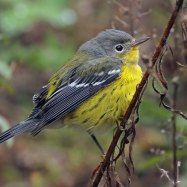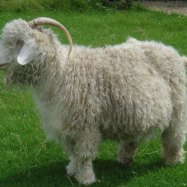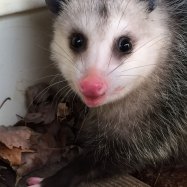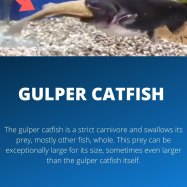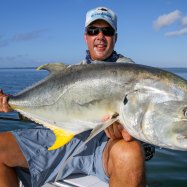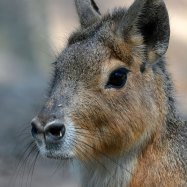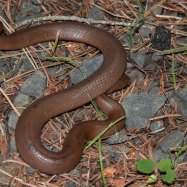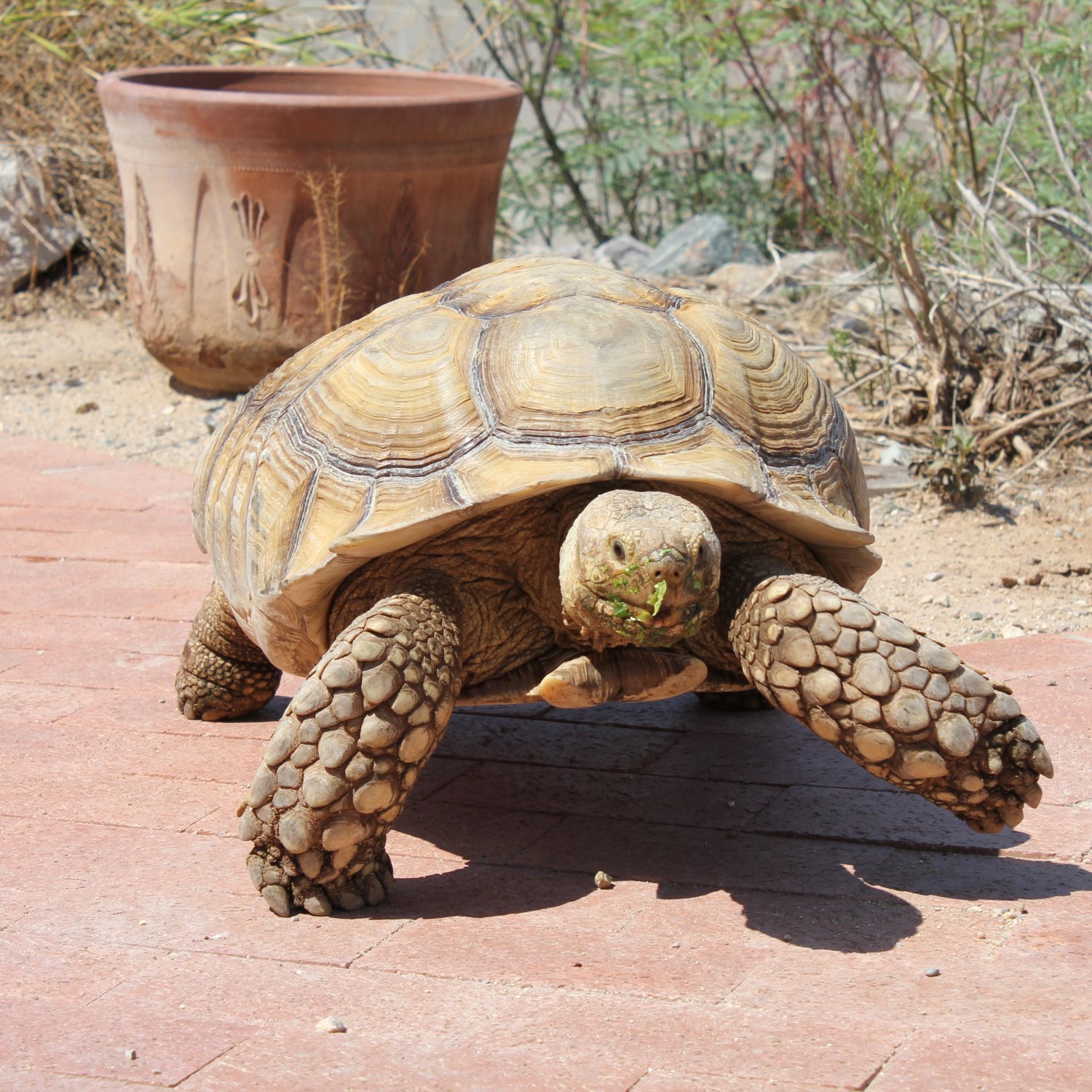
Sulcata Tortoise
70-100 cm
The Sulcata Tortoise, found in Sub-Saharan Africa, is one of the largest tortoise species with a length of 70-100 cm. It's dome-shaped body, belonging to the Testudinidae family, makes it unique among other tortoises. Learn more about this fascinating animal and its natural habitat. #SulcataTortoise #SubSaharanAfrica #Testudinidae #tortoisefacts
Animal Details Summary:
Common Name: Sulcata Tortoise
Kingdom: Animalia
Habitat: Dry savannas, scrublands, and semi-desert areas
The Mighty and Astounding Sulcata Tortoise
Have you ever heard of the Sulcata Tortoise? Also known as the African Spurred Tortoise, this incredible species has captured the hearts of many animal lovers around the world. With its striking appearance and fascinating traits, it's no wonder this reptile has become a favorite among pet owners. In this article, we'll take a closer look at the Sulcata Tortoise and discover what makes it such an extraordinary creature.A Closer Look at the Sulcata Tortoise
The Sulcata Tortoise, scientifically known as Centrochelys sulcata, belongs to the Animalia kingdom and the Chordata phylum Sulcata Tortoise. It falls under the class Reptilia, order Testudines, and family Testudinidae. These tortoises are originally from Sub-Saharan Africa, specifically the West and Central regions. Their natural habitat consists of dry savannas, scrublands, and semi-desert areas. This habitat offers them the perfect conditions to thrive, as they have access to plenty of vegetation for their unique feeding method.One of the most striking features of the Sulcata Tortoise is its large, dome-shaped body. They can grow up to 70-100 cm in length, making them one of the largest species of tortoises in the world. They have a unique coloration that ranges from dark brown to yellowish-brown, making them easily identifiable in their natural environment.
The Herbivorous Diet of the Sulcata Tortoise
As mentioned earlier, Sulcata Tortoises are herbivores, which means they only feed on plants. In the wild, they consume a variety of vegetation, including grasses, leaves, fruits, and flowers Scutosaurus. In captivity, their diet should consist of a variety of dark leafy greens, such as kale, collards, and dandelion greens. They also require a source of calcium, which can be found in cuttlebone or calcium supplements.It's essential to provide them with a healthy and balanced diet, as they are prone to becoming overweight. This can lead to various health issues, such as heart disease, respiratory problems, and even death.
How to Care for Your Sulcata Tortoise
If you're thinking of bringing a Sulcata Tortoise into your home, it's crucial to understand their specific care requirements. These tortoises need a large, outdoor enclosure with plenty of space to roam and graze. They are also active animals, so their enclosure should allow them to explore and exercise.Sulcata Tortoises require a warm and dry environment, as they are not well-adapted to cold temperatures. In captivity, a heat source, such as a basking lamp, should be provided to maintain a temperature between 80-90 degrees Fahrenheit. They also need access to clean and fresh water at all times, as they enjoy soaking and drinking.
Proper hygiene is also essential when caring for a Sulcata Tortoise. Their enclosure should be kept clean and disinfected to prevent the spread of bacteria and parasites. Regular vet check-ups are also recommended to ensure they are in good health.
The Incredible Adaptations of the Sulcata Tortoise
The Sulcata Tortoise has evolved several adaptations to help them survive in their harsh natural habitat. One of the most notable adaptations is their thick, scaly skin, which helps protect them from the hot African sun. They also have strong, sharp claws, which they use for digging burrows for shelter and foraging for food.Another fantastic adaptation is their ability to store water in their bladders. This allows them to survive for long periods without access to water, making them well-suited for their dry environment. They can also retract their limbs into their shell for protection, and their shells have bumps and ridges that help them blend in with the surrounding rocks and vegetation.
The Sulcata Tortoise as a Pet
Sulcata Tortoises have become increasingly popular as pets, but they require unique care and commitment. They can live up to 80 years in captivity, so they are a long-term commitment. It's important to research and understand their needs before bringing one into your home.Unfortunately, many Sulcata Tortoises are illegally captured and sold as pets, which has led to a decline in their wild population. If you choose to own a Sulcata Tortoise, ensure you obtain it from a reputable breeder and never support the illegal pet trade.
In Conclusion
The Sulcata Tortoise is a magnificent creature that continues to captivate and fascinate people around the world. From its impressive size and dome-shaped body to its unique adaptations and herbivorous diet, these tortoises are truly one of a kind. As a pet, they require special care and attention, but the reward of owning such a remarkable animal is immeasurable.We must also be mindful of the impact humans have on the wild populations of the Sulcata Tortoise. By understanding their needs and avoiding the illegal pet trade, we can help protect and preserve this incredible species for generations to come. The Sulcata Tortoise truly deserves its title as one of the most magnificent creatures found in nature.

Sulcata Tortoise
Animal Details Sulcata Tortoise - Scientific Name: Centrochelys sulcata
- Category: Animals S
- Scientific Name: Centrochelys sulcata
- Common Name: Sulcata Tortoise
- Kingdom: Animalia
- Phylum: Chordata
- Class: Reptilia
- Order: Testudines
- Family: Testudinidae
- Habitat: Dry savannas, scrublands, and semi-desert areas
- Feeding Method: Herbivorous
- Geographical Distribution: West and central Africa
- Country of Origin: Africa
- Location: Sub-Saharan Africa
- Animal Coloration: Dark brown to yellowish-brown
- Body Shape: Large and dome-shaped
- Length: 70-100 cm
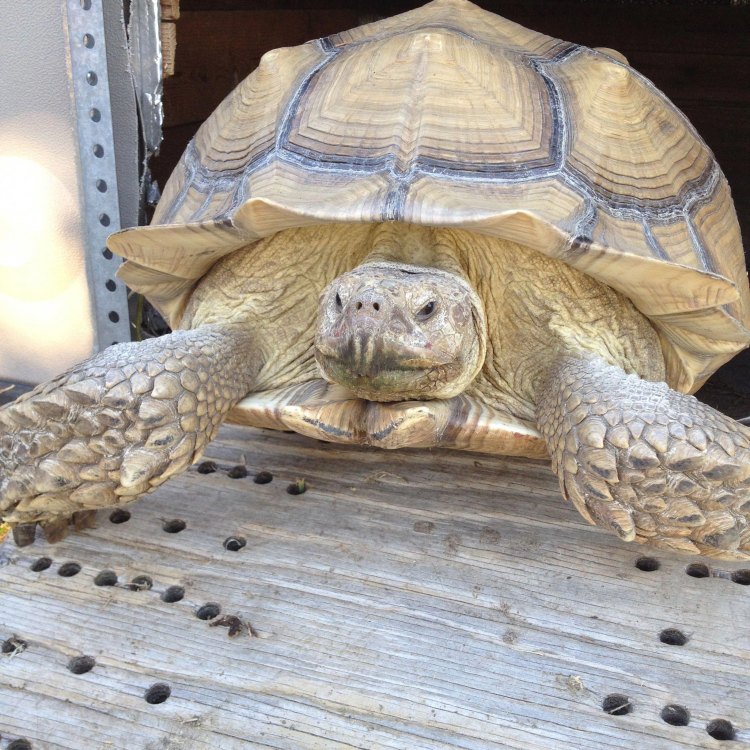
Sulcata Tortoise
- Adult Size: 80-120 cm
- Average Lifespan: 50-150 years
- Reproduction: Sexual
- Reproductive Behavior: Mating season occurs during the rainy season
- Sound or Call: Does not produce any vocalizations
- Migration Pattern: Non-migratory
- Social Groups: Solitary
- Behavior: Mostly active during the day, digs burrows to escape extreme temperatures
- Threats: Habitat loss, illegal pet trade, and poaching
- Conservation Status: Vulnerable
- Impact on Ecosystem: Important in maintaining the ecological balance of their habitat
- Human Use: Kept as pets and used in traditional medicine
- Distinctive Features: Large size, highly-domed shell, and spiky scales on the limbs
- Interesting Facts: Sulcata tortoises are the third-largest species of tortoise in the world
- Predator: Humans, lions, and hyenas
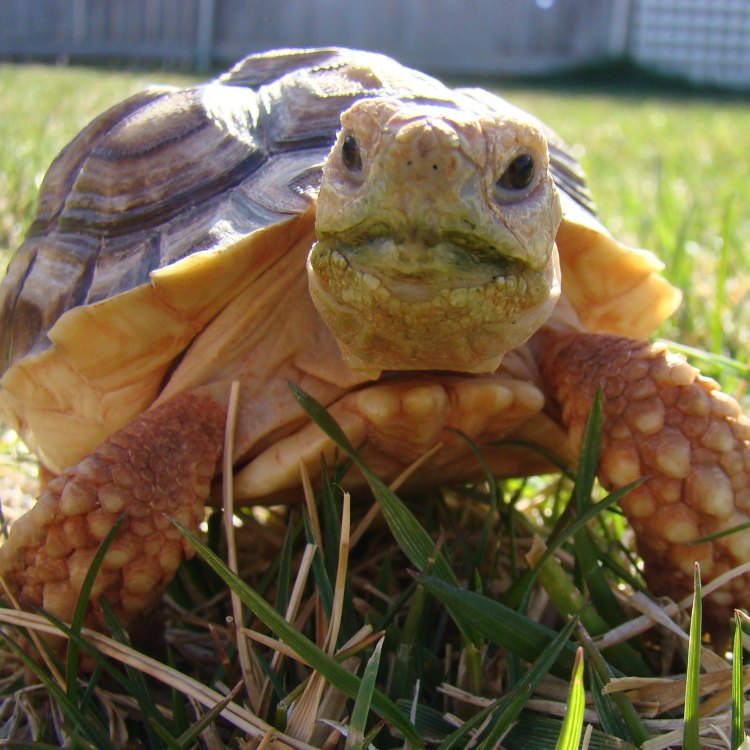
Centrochelys sulcata
The Colorful World of Sulcata Tortoises: Vital Players in the African Ecosystem
In the vast and diverse landscapes of Africa, there exists a unique and captivating creature – the Sulcata tortoise. This magnificent animal, also known as the African spurred tortoise, is renowned for its large size, long lifespan, and crucial role in maintaining the ecological balance of their native habitat. Let's delve deeper into the world of Sulcata tortoises and discover their distinctive features, behavior, and impact on the ecosystem.Meet the Giant of the Reptile World
At first glance, the Sulcata tortoise appears to be a creature from prehistoric times PeaceOfAnimals.Com. It is the third-largest species of tortoise in the world, with an adult size ranging from 80 to 120 cm (31 to 47 inches) in length and weighing up to 100 kg (220 lbs). This impressive size is what sets them apart from other tortoise species.But what truly makes them stand out is their large, highly-domed shell that serves as their primary defense mechanism against predators. The shell is made up of bony plates covered in keratin, the same material found in human hair and nails. The shell also boasts of a unique pattern of yellow and brown colors, giving them a distinct and attractive appearance.
The limbs of Sulcata tortoises are also worth noting. They have spiky scales on their limbs that act as a formidable weapon in times of danger. These spiky scales, along with their sharp beak, give them the ability to defend themselves against potential threats.
The Secret to a Long Life
One of the most remarkable traits of Sulcata tortoises is their exceptionally long lifespan, which can range from 50 to 150 years Serval. In comparison, the average lifespan of a domestic cat is only 12-18 years. This longevity is due to their slow metabolism and a highly efficient immune system, making them resilient to diseases and infections.As with many other species, the exact age of a Sulcata tortoise is difficult to pinpoint in the wild. However, these reptiles have been known to live for over 100 years in captivity, making them an excellent pet for those who can provide long-term care.
The Birds and the Bees Tortoise Style
Sulcata tortoises are sexually reproducing animals, with males and females having distinct reproductive organs. The mating season for these creatures typically occurs during the rainy season when food and water are plentiful. Males will engage in a courtship dance to attract the females, and if successful, they will proceed to mate.After the mating process, the female will lay her eggs in a shallow hole in the ground and cover them with soil. The incubation period of these eggs is anywhere between 90 to 120 days. Once they hatch, the tiny tortoises are on their own, with no parental care provided.
A Solitary Life in the African Savanna
Sulcata tortoises are solitary creatures, meaning that they prefer to live alone rather than in a group or community. They are mostly active during the day and tend to spend their time foraging for food, basking in the sun, or hiding in their burrows to escape extreme temperatures.Their burrows are crucial for their survival, as they provide shelter from the scorching sun and freezing temperatures at night. These burrows can run up to 10 feet deep and are also used for hibernation during the dry season.
A Serene Silence: The Silent Tortoise
While some creatures in the animal kingdom are known for their distinctive sounds or calls, the Sulcata tortoise is not one of them. These animals do not produce any vocalizations, making them silent and serene inhabitants of the African savanna. They communicate through tactile signals, such as nudging, biting, or headbutting, and their body language.A Vulnerable Creature Facing Numerous Threats
Despite their resilient nature, the Sulcata tortoise is facing several threats to their survival. Habitat loss, mainly due to human development, remains the biggest threat to these animals. The encroachment and destruction of their natural habitat leave them with fewer resources to survive.Another significant threat is the illegal pet trade, where these tortoises are often captured and sold as exotic pets. The high demand for these creatures still persists, despite laws and regulations in place to protect them.
Lastly, poaching is also a significant threat to Sulcata tortoises. Their unique appearance and large size make them a target for the illegal wildlife trade, where their shells are used for traditional medicine and decorations. These activities have significantly impacted the population of these creatures, placing them on the IUCN Red List as a "vulnerable" species.
The Vital Role of Sulcata Tortoises in the Ecosystem
Sulcata tortoises play a crucial role in maintaining the ecological balance in their native habitat. As herbivores, they feed on grasses, weeds, and other vegetation, which helps to keep their environment in check. By consuming large amounts of vegetation, they prevent it from becoming overgrown, which can have adverse effects on other species.They also serve as a source of food for predators like lions and hyenas, playing a crucial role in the food web. Their burrows provide shelter for smaller animals and insects, contributing to their ecosystem's biodiversity.
A Creature of Great Importance to Humans
Aside from their contribution to the ecosystem, Sulcata tortoises also hold significance to humans. In parts of Africa, they are kept as pets, admired for their unique appearance and long lifespan. However, it is essential to note that these animals require specific care and conditions to thrive, and they are not suitable as pets for everyone.In traditional medicine, parts of their body, including their shells, are believed to have medicinal properties and are used in remedies. While the efficacy of these treatments is debatable, it remains a significant use for these creatures in some cultures.
Final Thoughts
Sulcata tortoises are undeniably fascinating creatures, with their immense size, long lifespan, and vital role in the African ecosystem. However, their survival is at risk due to various threats, and it is our responsibility to ensure their conservation for future generations to admire and learn from these gentle giants. Let us all do our part in protecting their natural habitat and promoting sustainable practices to secure their place in the colorful world of African wildlife.
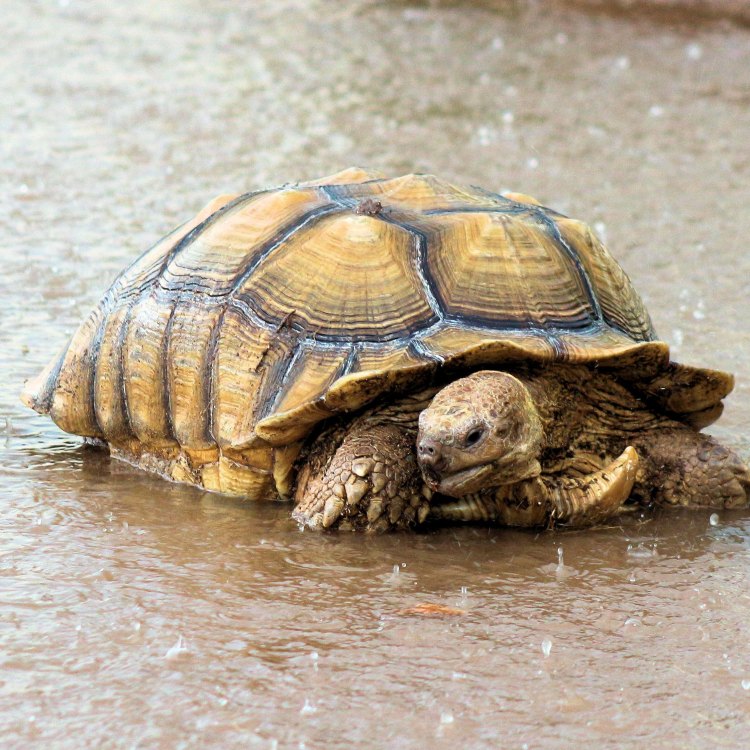
The Mighty and Astounding Sulcata Tortoise
Disclaimer: The content provided is for informational purposes only. We cannot guarantee the accuracy of the information on this page 100%. All information provided here may change without prior notice.

